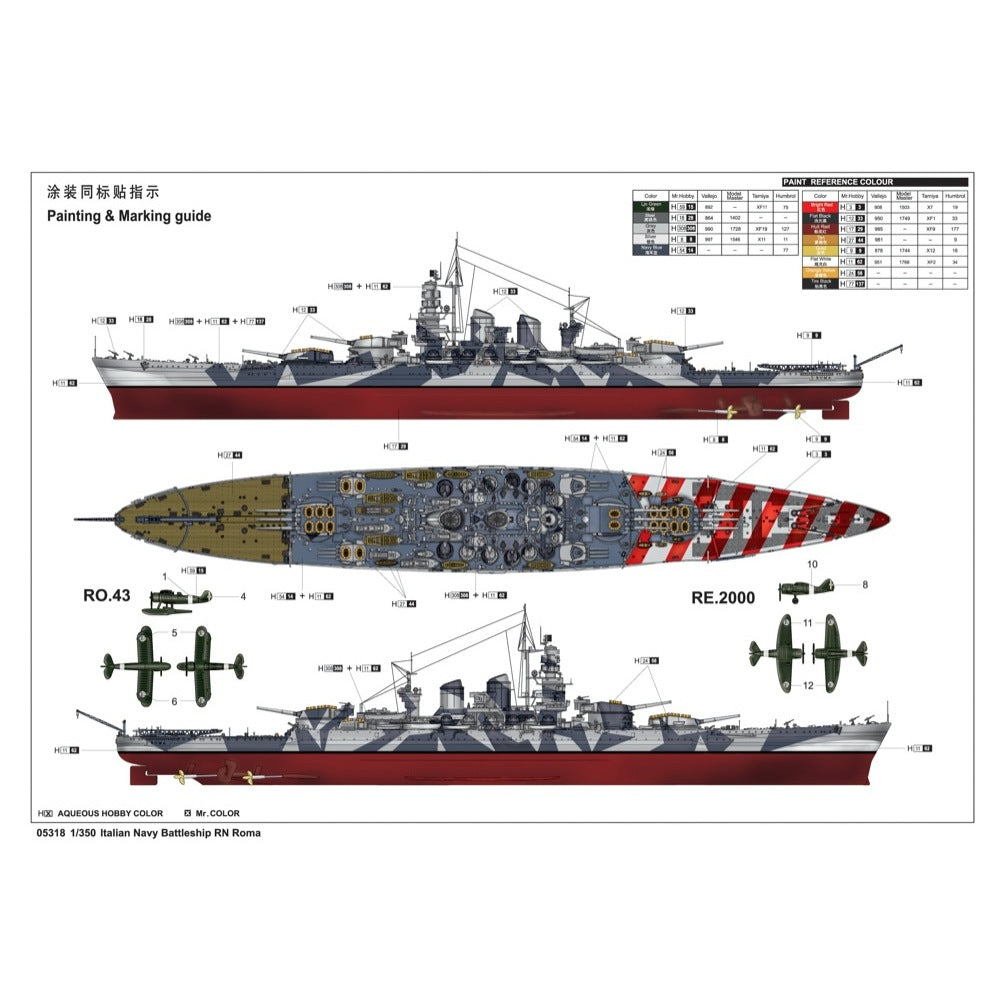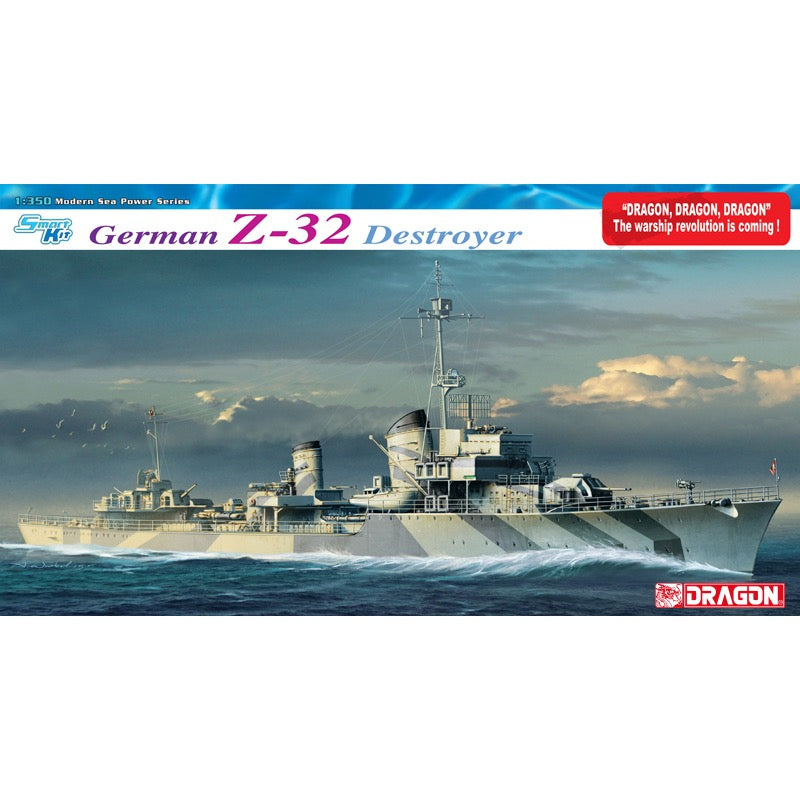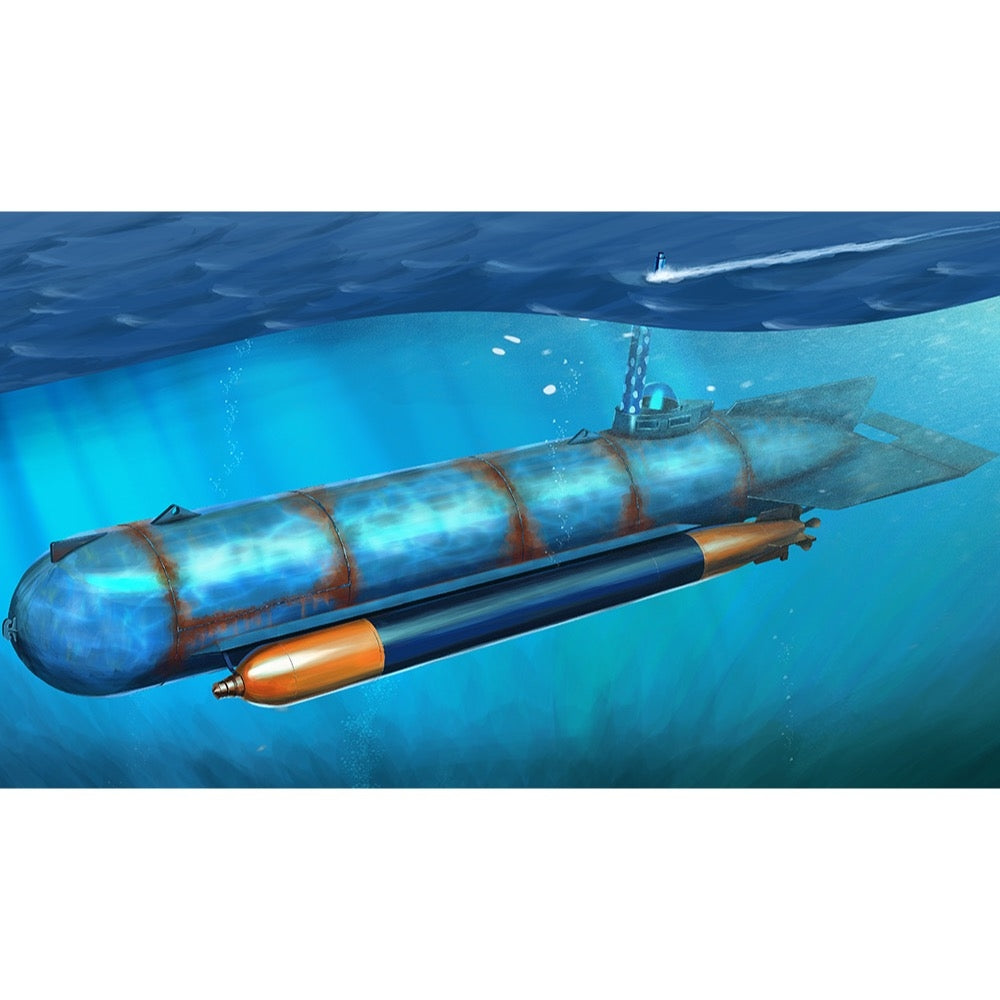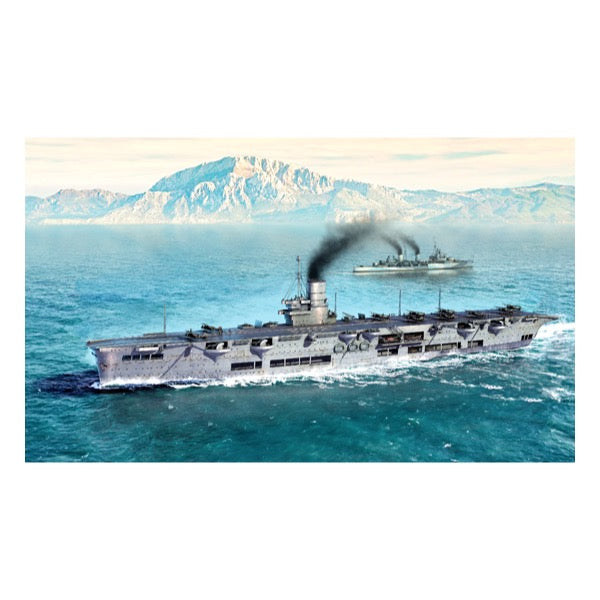
Trumpeter 06713 1/700 HMS Ark Royal 1939*
31.00
$
<p>Designed in 1934 to fit the restrictions of the Washington Naval Treaty, Ark Royal was built by Cammell Laird and Company, Ltd. at Birkenhead, England, and completed in November 1938. Her design differed from previous aircraft carriers. Ark Royal was the first ship on which the hangars and flight deck were an integral part of the hull, instead of an add-on or part of the superstructure. Designed to carry a large number of aircraft, she had two hangar deck levels. She served during a period that first saw the extensive use of naval air power; a number of carrier tactics were developed and refined aboard Ark Royal. Ark Royal served in some of the most active naval theatres of the Second World War. She was involved in the first aerial and U-boat kills of the war, operations off Norway, the search for the German battleship Bismarck, and the Malta Convoys. Ark Royal survived several near misses and gained a reputation as a 'lucky ship'. The Germans incorrectly reported her as sunk on multiple occasions. She was torpedoed on 13 November 1941 by the German submarine U-81 and sank the following day. Her sinking was the subject of several inquiries; investigators were keen to know how the carrier was lost, in spite of efforts to save the ship and tow her to the naval base at Gibraltar. They found that several design flaws contributed to the loss, which were rectified in new British carriers.</p>
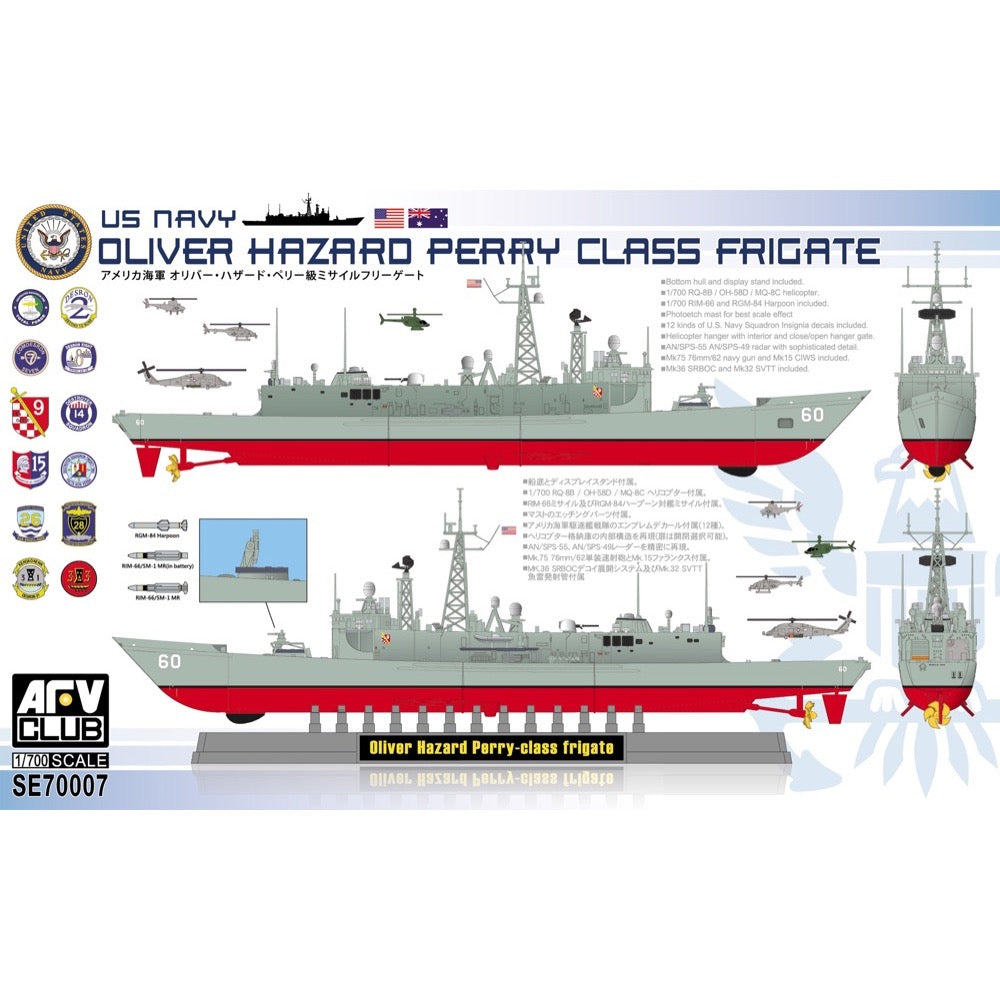
AFV Club SE70007 1/700 US Navy Oliver Hazard Perry Class Frigate w/ Australian Decals
28.00
$
<p>US Navy Oliver Hazard Perry Class Frigate w/ Australian Decals</p>
<h3>Features</h3>
<ul>
<li>This model kit includes a ship's bottom and display stand for added realism. </li>
<li>It also comes with a 1/700 scale RQ-8B/OH-58D/MQ-8C helicopter, RIM-66 missile, and RGM-84 Harpoon anti-ship missile. </li>
<li>The kit features mast etching parts and includes U.S. Navy Destroyer Squadron emblem decals in 13 different types. </li>
<li>You can accurately reproduce the internal structure of the helicopter hangar with the option to open or close its doors. </li>
<li>The kit precisely replicates AN/SPS-55 and AN/SPS-49 radars, along with Mk.75 76mm/62 single rapid-fire gun and Mk.15 Phalanx. </li>
<li>It also includes the MK.36 SRBOC decoy deployment system and Mk.32 SVTT torpedo tube.</li>
</ul>
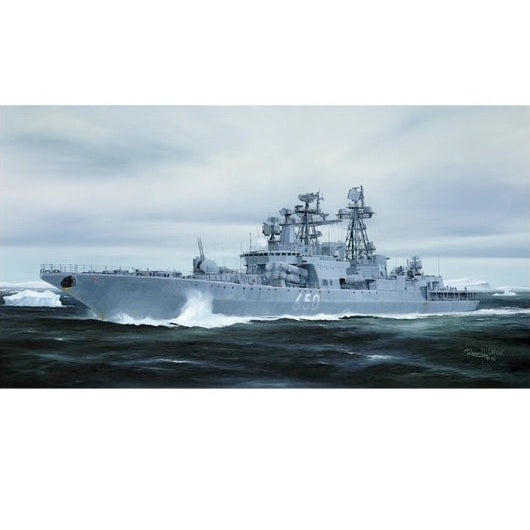
Trumpeter 04531 1/350 Russian Udaloy II Class Destroyer Admiral Chabanenko
30.00
$
<h3>Udaloy II was designed as a multipurpose warship could perform aerial defence, anti-submarine and anti-surface ship warfare.</h3>
<p>Following Udaloy's commissioning, designers began developing an upgrade package to provide more balanced capabilities.</p>
<p>Intended to be the Russian counterpart to the American Arleigh Burke class ships, the Udaloy-II is modified by the replacement of the SS-N-14 by the SS-N-22, reflecting a change in emphasis from ASW to anti-shipping. Other changes include an improved self defense capability with the addition of the gun/SAM CIWS systems, the 533 mm torpedoes tubes, a twin 130mm gun, the RBU-12000 anti-torpedo system and several anti-aircraft systems. It was equipped with more capable sonar, an integrated air defense fire control system.</p>
<h3>Features</h3>
<ul>
<li>
<p>One-piece hull made from two-directional slide moulds.</p>
</li>
<li>
<p>Sponsons are represented on lower hull by slide-mold technology.</p>
</li>
</ul>
<h3>Specifications</h3>
<ul>
<li>
<p>Length: 467.2mm Width: 55.2mm Height: 122.8mm</p>
</li>
<li>
<p>Total Parts: 452pcs</p>
</li>
<li>
<p>Photo Etched Parts: 1pcs</p>
</li>
<li>
<p>Total Sprues: 11 sprues, full hull , deck</p>
</li>
<li>
<p>Paint Scheme: Russian Navy Admiral Chabanenko (BPK 437) (1995) - Northern Fleet</p>
</li>
</ul>
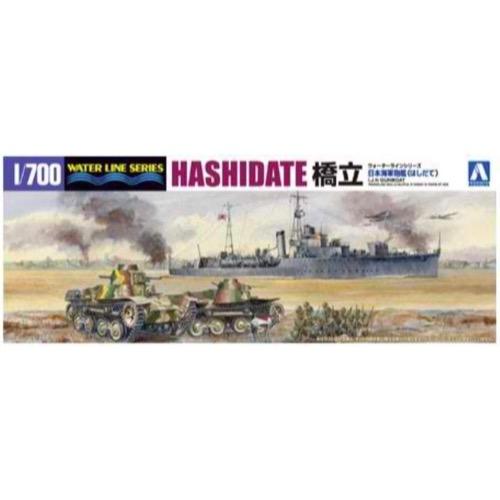
Aoshima A000365 1/700 IJN Gunboat Hashidate
14.00
$
<p>Detailed waterline model also includes two Type 95 Ha-Go tanks, also in 1/700 scale.</p>
<p>Hashidate was the lead vessel in the Hashidate-class gunboats in the Imperial Japanese Navy, that operated in China during the 1940s.</p>
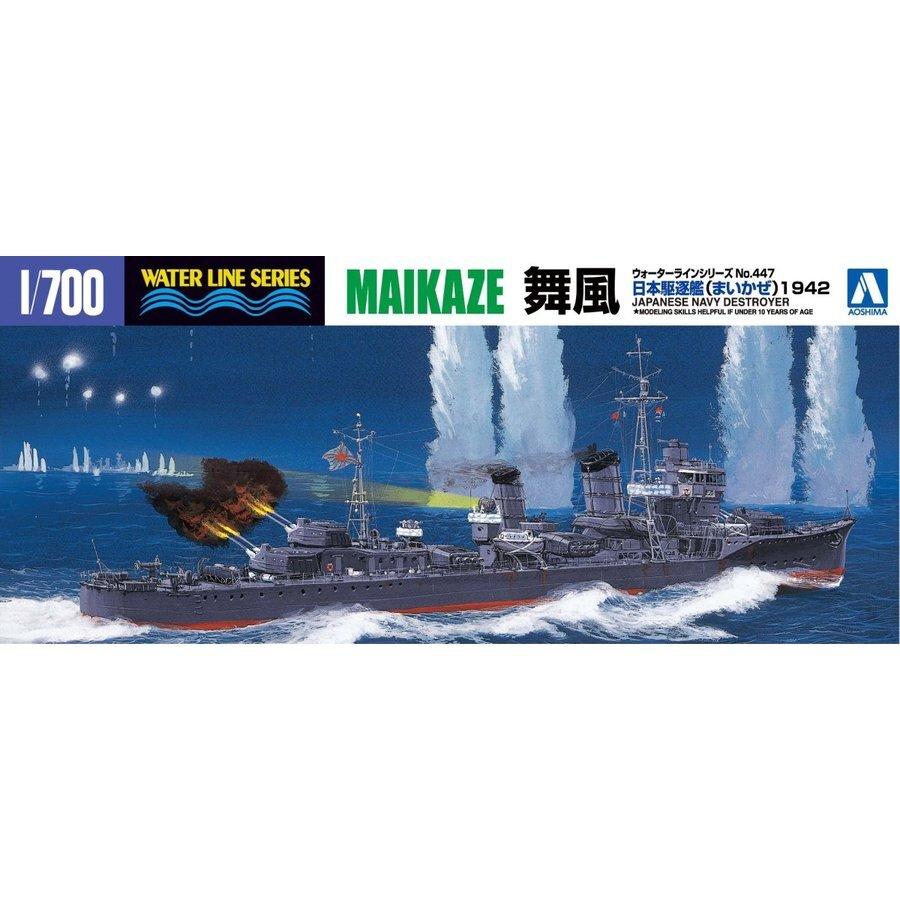
Aoshima A003407 1/700 IJN Destroyer Maikaze 1942
8.00
$
<p>Maikaze was a Japanese destroyer whose keel was laid in 1940, launched in March 1941, and commissioned in the Imperial Japanese Navy in July 1941. The length of the ship at the time of launching was 118.5 m, width 10.8 m, and the actual full displacement - 2,490 tons. The maximum speed of the destroyer Maikaze was up to 35 knots. The main armament at the time of the launch was 6 127 mm guns in three twin turrets, and the secondary armament was 4 25 mm cannons, depth charge launchers and eight 610 mm torpedo tubes with eight spare torpedoes.</p>
<p>Maikaze was the eighteenth Kagero-class destroyer. Units of this type were created as part of the Japanese fleet expansion program of 1937 and 1939. They returned to the use of strong artillery (6 127 mm guns), which had already appeared on the Fubuki-class destroyers in the 1920s. The provisions of the disarmament treaties were also not respected, thanks to the czum the Japanese designers had complete freedom in designing. As a result, ships with strong artillery and torpedo armaments, good sea performance, and especially - unlike the previous Japanese destroyers - had no problems with stability and overall durability of the structure. The only drawback was the weak anti-aircraft armament, which, however, was systematically strengthened during the war in the Pacific. The combat career of destroyer Maikaze was rich and began in World War II with the cover of Japanese landings in the Malaya and Philippine regions. In March and April 1942, he escorted supply units for ships participating in the Indian Ocean raid. In June, it took part in the Battle of Midway as a cover unit for the Japanese carrier team. From August 1942 to February 1943, Maikaze served in the Solomon Islands archipelago, fighting for Guadalcanal. In the course of these struggles, he took part in the Battle of the Santa Cruz Islands. From July 1943 to the end of that year, he served as convoy in the square: Truk, Yokosuka, Shanghai and Rabaul. The destroyer Maikaze was sunk by the American on-board aviation and as a result of artillery fire on February 7, 1944.</p>
<p>A 1/700 waterline model of the IJN destroyer Maikaze. About 17 cm in length, this model features well-molded parts specific to the Maikaze as well as a generic sprue of guns, torpedo launchers and small boats for IJN vessels.</p>
<p>This is an injection-plastic ship model kit.</p>
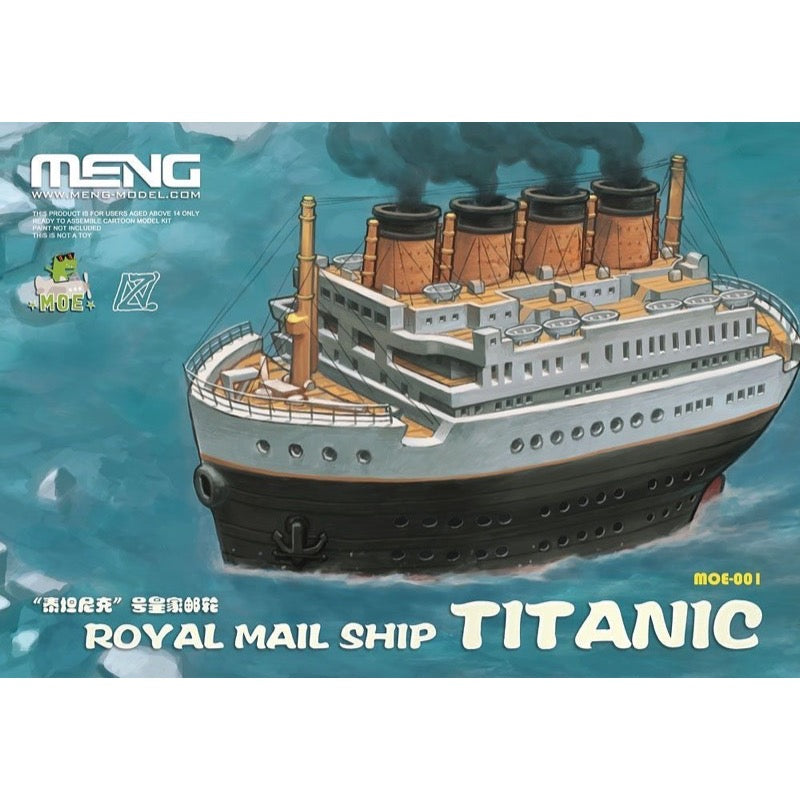
Meng MOE-001 Royal Mail Ship Titanic
8.00
$
<p>The legendary RMS Titanic launches Meng's MOE model kit lineup of cute, superdeformed ships! She's molded in color and snaps together so neither paint nor glue are required; she can be built as a full-hull or waterline version. Get this compactly-sized kit of one of the most famous ships ever to sail the world's seas for your own today!</p>
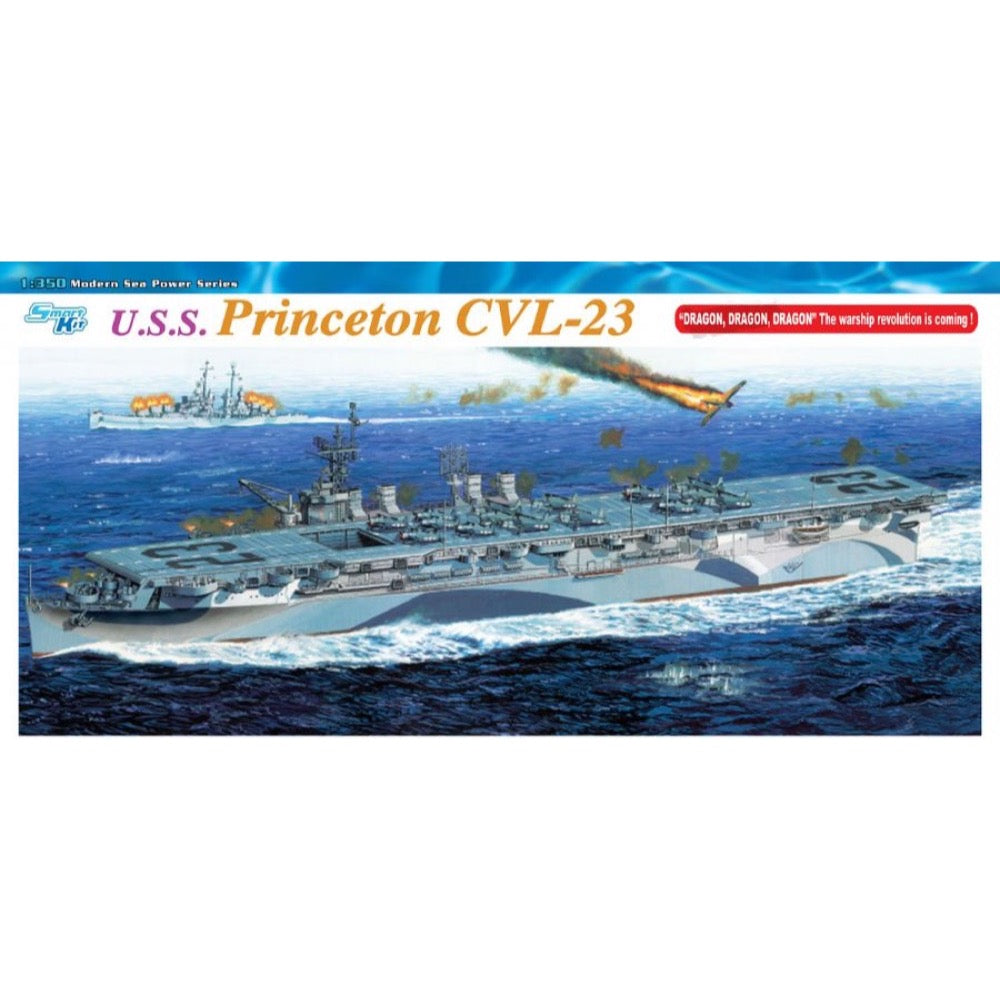
Dragon 1055 1/350 USS Princeton Aircraft Carrier
87.00
$
<p>Dragon has launched a fantastic new large-scale ship down the slipway from its workshop. The new kit is a 1/350 scale rendition of USS Princeton (CVL-23), an Independence-class light aircraft carrier of the US Navy (USN). This ship was originally laid down as a Cleveland-class light cruiser, but it received a new role and was eventually commissioned on 25 February 1943. Its first combat tour was in the Pacific from August onwards in the region of places like Tarawa. Its next combat tour commenced in January 1944, and in the Battle of the Philippine Sea, Princeton’s aircraft contributed 30 kills.</p>
<p>The 13,000-ton carrier subsequently supported landings in Leyte in the Philippines in October 1944, where she was attacked by a lone Yokosuka D4Y “Judy” dive bomber. This Japanese aircraft dropped just a single bomb, but it was sufficient to cause a series of explosions and fires. Tragically, by evening the carrier was at the bottom of the Leyte Gulf. A total of 108 sailors lost their lives but 1,361 crewmen were rescued by other USN vessels.</p>
<p>This new Smart Kit is logically based on Dragon’s earlier USS Independence (CVL-22), but it features numerous new parts. These include the port antiaircraft gun platform, the island walls and radar installation. The stern antiaircraft gun platform has been revised too. There are also a number of new photo-etched parts specifically for Princeton; these include radar antenna components. For greater versatility, modelers can elect to build a full-hull version or a waterline hull. To help populate this large ship, there are 18 appropriately scaled crewmen figures, as well as vehicles such as aircraft tugs. The complement of twelve aircraft is reproduced in transparent plastic, which allows easier painting and portrayal of cockpit glazing. This is an amazingly detailed and busy-looking model, and its quality is indeed fit for a prince!</p>
<h3>Features</h3>
<ul>
<li>Newly tooled platform on side of CVL-23</li>
<li>Photo-etched railings below island are newly produced</li>
<li>Waterline or full-hull version can be assembled</li>
<li>Delicate funnel w/great details</li>
<li>Intricate bridge w/finest detail</li>
<li>Extra-thin shield wall reproduced for accurate 1/350 scale appearance</li>
<li>Delicated bilge keels are represented on lower hull by slide-mold technology</li>
<li>One-piece slide-molded upper hull w/undercut details realistically presented</li>
<li>Slide-molded upper and lower hull accurately produced</li>
<li>Hanger bay walls w/great deail</li>
<li>Hangar interior w/fine frames</li>
<li>Flight deck elevators can be posed in either raised or lowered position</li>
<li>True-to-scale ultra-thin propellers</li>
<li>a</li>
<li>Rudder can be easily assembled</li>
<li>Finest tread pattern on flight deck of CVL-23</li>
<li>Finest tread patterns on CVL-23 flight deck elevators</li>
<li>Accurately shaped flight deck side w/slide-mold technology</li>
<li>10 realistic 1/350 scale aviators and 8 realistic groundcrew</li>
<li>4 delicate tractor tugs included</li>
<li>2 delicate 1/4-ton 4x4 trucks included</li>
<li>6 TBF and 6 F6F are conveniently constructed in transparent plastic</li>
<li>Wings of TBF and F6F can be folded</li>
<li>Detailed island is finely produced via slide-mold technology</li>
<li>Delicate tower structure is accurately produced</li>
<li>Realistic radars on tower structure</li>
<li>Radars on flight deck side are truly reproduced</li>
<li>Slide-molded crane boom w/details</li>
<li>Slide-molded radar array reproduced</li>
<li>Delciate paravane is realistically produced</li>
<li>Rectanglar life rafts look authentic</li>
<li>Delicate whaleboat w/fine detail</li>
<li>Photo-etched safety net</li>
<li>Antenna on deck side has option of being folded</li>
<li>Twin 40mm Mk4 guns reproduced w/delicate detail</li>
<li>Finely detailed quadruple 40mm Mk4 mount</li>
<li>Rinely represented Mk51 gun director</li>
</ul>
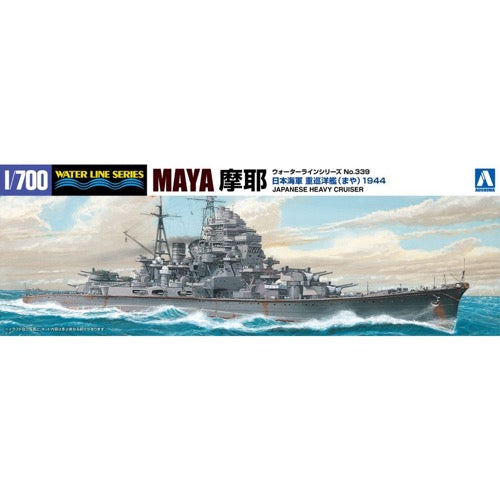
Aoshima A004538 1/700 I.J.N. Heavy Cruiser Maya 1944
17.00
$
<p>Maya was a Japanese heavy cruiser the keel of which was laid in 1928, launched in November 1930, and commissioned in the Imperial Japanese Navy in June 1932. The length of the ship at the time of launching was 203 m, width 18.3 m, and the actual full displacement, after modernization - 15,500 tons. The maximum speed of the Maya cruiser was 35.5 knots. At the time of launching, the main armament was 10 203 mm guns in five turrets of two guns, and the additional armament was, among others: 4 120 mm cannons and 8 610 mm torpedo tubes, later this number was increased to as many as 16 launchers!</p>
<p>Maya was the third Takao-class cruiser. Cruisers of this type were built respecting the limitations of the Washington Disarmament Treaty signed by the government in Tokyo in 1922. The ships of this type are clearly based on the design of the Myoko-class cruisers. The changes concerned: the use of new main artillery cannons, improved armor, expansion of the bow superstructure and better layout of the torpedo armament. Emphasis was also placed on high top speed. The pursuit of such extreme goals led to the creation of ships with powerful artillery and torpedo armament, great speed, but with a lower range than assumed, average sea bravery and with considerable stability problems. Subsequent modernizations on the first two ships of this type partially eliminated these disadvantages, but did not completely eliminate them. The Maya combat trail in World War II began as early as December 1941 with support for Japanese landings in the Philippines. Then, until March 1942, Maya fought in the area of the Dutch East Indies. In the summer, he participated in the seizure of the Aleutians, and later fought in the Solomon Islands. In March 1943 he took part in the Battle of the Commander Islands. In the summer of 1944 he fought in the Battle of the Philippine Sea, but, despite high Japanese losses, he survived it. Cruiser Maya was sunk in the course of the fighting in Leyte Bay on October 23, 1944 as a result of a torpedo attack by the USS Dace submarine.</p>
<p>This is an injection-plastic ship model kit.</p>
<h3>Features</h3>
<ul>
<li>The 4th Takao-class heavy cruiser</li>
<li>The third turret was removed by air raid at Rabaul Harbor, and anti-aircraft armament was strengthened.</li>
<li>Bridge clear parts included</li>
</ul>
<h3>Specifications</h3>
<ul>
<li>Item Size: 31 x 11 x 4.2 cm</li>
<li>Weight : 262g</li>
<li>Scale: 1/700</li>
</ul>


